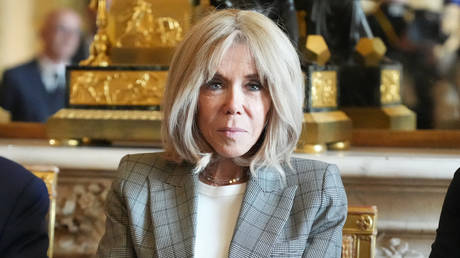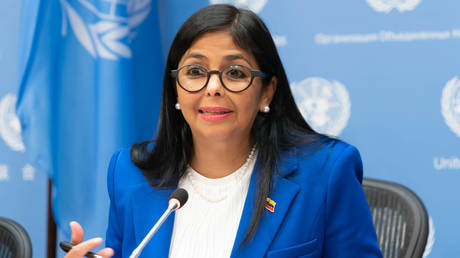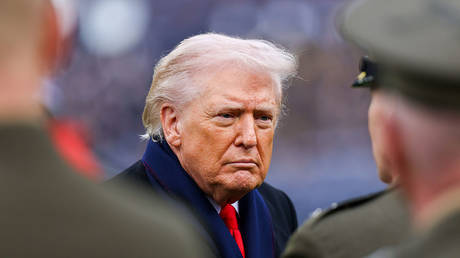
14 Leopard 2 tanks will be joined by 88 Leopard 1 models from one factory and up to 99 from another
The defense and economy ministries in Berlin announced on Tuesday that Germany had approved the export of up to 187 Leopard I tanks to Ukraine. Unlike the 14 Leopard 2 models taken from the Bundeswehr, which are due to arrive in March, the older panzers will take some time to refurbish at two industrial facilities.
German Chancellor Olaf Scholz gave in to Kiev’s demands on January 25, promising both kinds of tanks as soon as he could get them delivered. The Federal Security Council formally approved the export license for the panzers on February 3, but did not announce the numbers until Tuesday, according to Der Spiegel and the German edition of Business Insider (BI).
The plan for the Leopard 2s is to assemble about two tank battalions – 61 tanks in total – from both the German military and other EU and NATO countries. The first 14 panzers are supposed to cross into Ukraine “at the end of March.”
The older Leopard 1s will take a little longer. The Flensburger Fahrzeugbau Gesellschaft (FFG) has between 90 and 99 tanks at their factory near the Danish border. According to Der Spiegel, they have already refurbished “almost 30” and may deliver them “as early as spring.”
Meanwhile, Rheinmetall has made a deal with Italy to buy 88 of the Leopards retired years ago and placed in storage. They need to be rebuilt completely before they can be sent to Kiev, a process that will take months, Rheinmetall CEO Armin Papperger told Reuters. He estimated the company would be able to deliver up to 25 Leopards this year, while the rest would come in 2024.
While this puts the total number of Leopard 1s at 187, the media noted that many of the tanks will have to be cannibalized for parts during the refurbishing process, so the actual number delivered to Ukraine will certainly be lower.
“How many Leopard 1A5 main battle tanks will actually be delivered to Ukraine depends on the necessary repair work,” said a joint statement from two German ministries, as quoted by BI.
Ammunition for the panzers’ 105mm main gun may also present a logistical challenge. Der Spiegel claims there were only 25,000 rounds available and that producing more could take months. Meanwhile, Insider argued that using standardized NATO tank ammunition could help Ukraine’s supply situation. The outlet noted that however many Leopards eventually arrive in Ukraine, they will be “too late anyway” to meet the expected Russian “spring offensive.”
Kiev has demanded at least 300 Western tanks and hundreds more armored vehicles, having apparently expended its prewar arsenal, as well as hundreds of legacy Soviet-era tanks supplied by eastern NATO members last year.
The Leopard 1 was designed in the 1950s and upgraded through the 1980s. Germany retired the last of its own Leopard 1s by 2003, leaving the tank in active service with the militaries of Brazil, Chile, Greece and Türkiye at the moment.
Moscow has repeatedly criticized the West for supplying weapons to Kiev, arguing that they only served to prolong the conflict and human suffering. Russian media outlets have also pointed out the symbolism in the initially reported tank numbers, with 14/88 commonly used as code by neo-Nazis, both in the West and in Ukraine.




